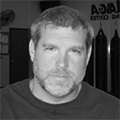As you shift your perspective around failure, you will come to see that failure really is the Father of Success.
As warriors in this life, we must seek out worthy goals, be prepared to apply effort in seeking success by learning from failure, and (above all) must create the emotional space (by redefining failure) to work towards and discover success.
When I think about this process, I recall a story Bas Rutten once told me many years ago while we were training one morning in Phoenix, AZ about his early fighting career. Early on, Bas was a great striker, but he had made a move from a Thai Boxing format to Pancrase – where MMA was utilized within the fight format.
In one of his early matches, Bas was winning handily but ultimately was submitted by his opponent. Frustrated by the loss, Bas went back to the ring with a training partner. He moved into the position from which he was submitted and committed to staying there until he found a way to escape the submission. Bas said it took most of the day, but ultimately – by using a host of failures as a guide – he discovered success.
Success is often a process of enlightened and disciplined trial and error. In fact, it is always this way. The term “overnight success” is a misnomer. In virtually all lasting and consistent successes, those that succeed have invested in and learned from a litany of failures. In this way, failure is a resource to be exploited.
The lesson from the story Bas told me can be encapsulated in the concept of failing forward fast (FFF). In the FFF process, mindset and intention matters most. FFF is an intentional focus on quickly dissecting and applying the lessons learned from failure as a means to achieve success or to optimize an outcome. Implicit in this definition of FFF is the concept of quickly accepting failure (once apparent) both emotionally and mentally – avoiding the pitfall of spinning out and losing focus. So many of us, after failure, have a tendency to shut down (stuck in the subjective, personalized realm) when we should be ruthlessly dissecting and leveraging failure for clues that lead to success (working from the objective perspective). In short, avoid spending valuable time bathing the in the exquisite misery of your failure (for some, this re-enforces a ritualistic pattern of self hate). Instead, seek objectivity and move forward.
Remember, failure simply confirms your humanity, but perseverance confirms your character.
One to the most vital tools in turbo-charging the concept of failing forward fast as a practical and accessible real world paradigm is the OODA loop model. Pioneered by Colonel John Boyd of the United States Air Force, the OODA loop was originally developed and utilized in the second half of the 20th century for air combat – where pilots facing superior aircraft (in terms of speed and/or maneuverability) were forced to adapt -utilizing the OODA loop to process information and act more quickly than enemy pilots. In doing so, pilots that acted more quickly interrupted the implicit OODA loop of the enemy pilots – gaining significant tactical advantage.
OODA is an acronym for Observe, Orient, Decide & Act – representing a continuous cycle of incoming environmental feedback, internal processing, decision making and explicit action taking. Some have claimed that the OODA loop concept combines game theory, cognitive science and Gestalt psychology (basically, visual pattern recognition and general orientation). But for our purposes, we simply need to understand how to structure our perspective around the OODA loop.
Colonel Boyd’s OODA loop can be seen as a repeating cycle of a four step approach to critical decision making that sequentially focuses the decision maker on acquiring and filtering incoming data (and information) from the environment (Observe), contextualizing the observations into situational awareness and knowledge (Orient), selecting from developing and competing alternatives (Decide), and taking decisive action (Act).
New incoming information, including the response (or responses) from the environment and target will elicit another cycle of the OODA loop. This process, as Boyd explained, should be thought of as a ‘set of interacting loops that should be kept in continuous operation during combat.’ The goal being – to make effective decisions faster than your opponent thereby “getting inside” and corrupting his/her OODA loop. This process lays out a structured, disciplined and principle-based approach for effective decision-making. This is important, because principle-based approaches to decision making are the only consistently effective means of getting to effective action – much like the Krav Maga principles are deployed during a response to a violent, self-defense situation.
Perhaps the most powerful benefit of employing the OODA loop is the prompting of the user to act. Taking action – even a small action – eliminates doubt and jump-starts the repeating cycle of interacting loops that allows for decisiveness and further responsiveness. This is critical given that doubt is, in essence, emotional energy that depletes the mental reserve and corrupts our attention control (which corrupts our focus on the target or goal) and our focus on our witness (discussed in detail another time perhaps). Effective attention control avoids the obsessive, compulsive thinking that leads to shut down, and instead keeps us focused on the task at hand. In short, taking action eliminates doubt.
In summary, as we change our relationship with failure (see it as feedback) and leverage its feedback in the Observe and Orient components of the OODA loop, we turbo-charge our path to success by harnessing the power of the continuous, intersecting loops that characterize the OODA paradigm until we succeed. I fully endorse the OODA loop concept, and I encourage you to explore what it can do for you in your Krav Maga training and in a host of other settings and circumstances across your life.





Van Neely
Thank you Chief Kirk. It’s too easy to spiral and obsess after failure, while working through the the failure objectively with ACTION and the simple acceptance that one is human yields improvement and humble confidence.